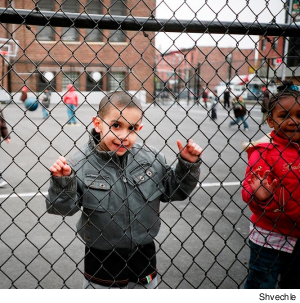Mike Bloomberg was dubbed the “Education Mayor,” not only because he was the first mayor to exercise explicit control over the Board of Education, but because of his unrelenting public focus on data-based accountability, choice and competition. Though many parents, educators, policy experts and even the general public disputed their worth, the administration was unabashed in following these policy guide stars. Such consistency yielded an indelible imprint on the city’s, indeed the nation’s, education landscape.
 |
Because he ran as an unapologetic anti-Bloomberg progressive, Mayor-elect Bill de Blasio now faces ideological challenges on many fronts. But few loom as large as equaling Bloomberg’s educational impact while writing from the left side of the political ledger. At the same time, there is the huge managerial task of running a school system that far exceeds other districts in enrollment, staffing and budget. The Department of Education (DOE)is more than ever a flotilla than a single ship, so keeping its constituent elements afloat and moving in the right direction is daunting. And the new mayor must do all this without the ultimate Bloomberg weapon, letting his ships sink when they start to leak! De Blasio, instead, has promised to bail them out.
A Fresh Vision
Merely reacting to Bloomberg policies, governing only as the non-Bloomberg, would be a mistake. Sure, de Blasio should keep campaign promises regarding decreasing the number of school closures; increasing parents’ voice in decision-making; renegotiating the State-imposed teacher evaluation system; charging some charter schools rent for co-location in DOE buildings; and ending school-wide letter grades. While these are important goals, they are also the easy part, since all are largely within his control.
While winning Albany’s approval for taxing the rich to pay for expanding early childhood education, and for after-school programs in all middle schools, will be a challenge, they are achievable goals – if not immediately, then after State elections next fall. Polls show strong support for de Blasio’s plan among upstate voters, and past campaigns (the 2004 hike in New York’s minimum wage, and the 2011 extension of the “millionaires tax”) have shown that it’s possible to mobilize that kind of support to overcome opposition from the governor and State Senate.
But even winning in Albany will not be enough to lead New York City’s public schools in a new direction. The new mayor needs to shift the conversation from, “What would Bloomberg do?” to a clearly articulated mission of his own. De Blasio’s “tale of two cities” approach – already a trademark aphorism – provides a ready starting point for this new educational era.
The City’s Independent Budget Office recently released a report on the “Availability and Distribution of Selected Program Resources in New York City High Schools,” finding, in part, that poor students and students of color are able to take fewer advanced courses leading to college. This lengthy statistical analysis, at odds with Bloomberg’s insistence that choice levels the playing field, provides a clear opportunity for the new mayor to correct resource imbalances.
Another flagrant example of racial disparity, disproportionately low enrollment of black and Latino students in the city’s specialized high schools, is already the subject of a federal complaint by the NAACP Legal Defense and Educational Fund and others (in which I’ve played an advisory role). De Blasio promised during his campaign to correct this situation, in part by working to repeal or amend the State law that requires a single, rank ordered test to determine admissions.
Time to Listen
Of even broader consequence would be sustained attention to the large numbers of minority students in special education programs who never graduate. According to 2013 data, public school English language learners (ELL) number 159,162 or 14.4% of the city’s entire student population. Yet the graduation rate for this large group is below 50%, well under the DOE’s official overall graduation rate for the same year of approximately 62%. Only 7% of ELLs from the 2006 cohort graduated on time, college and career ready, according to city data, and ELL students are disproportionately identified as requiring special education services, with over 20% classified for special education. Targeting ELLs and especially those in special education for increased academic attention, as required by State law, can lead to significant progress.
A recent report by the New Settlement Parent Action Committee, “Persistent Educational Failure: The Crisis in School District Nine and a Community Roadmap for Mayor Bill de Blasio,” makes an explicit call for reform in New York’s poorest borough by suggesting four main strategies: a new community-driven process to hold schools accountable; building the capacity of local schools to meet the challenge of higher standards; harnessing community resources to close the opportunity gap; and prioritizing parent involvement to improve literacy for English language learners. Meanwhile, the Coalition for Multiple Pathways to a Diploma (of which I’m a member), a project of Advocates for Children of New York, has suggested a number of ways to increase the graduation rate while maintaining standards of college and career readiness.
These avenues to improve public education depend on the new mayor differentiating himself from his predecessor in another important way: listening. That is a two-way street: collaboration requires mutual respect, lowered voices, and recognition that give-and-take must replace my-way-or-the-highway demands. Through reasoned conversation among multiple constituencies, Mayor de Blasio stands a chance to change the tale of two cities.
___________________________________
David Bloomfield is professor of educational leadership, law and policy at Brooklyn College and the CUNY Graduate Center.

